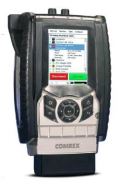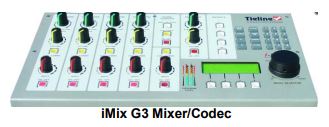The Goal is Quality Audio Anywhere

[September 2012] Getting air-quality audio back from outside the studio can be a challenge. Mark Shander concludes this series about traditional solutions that work, as well as some ideas that utilize new products and techniques.
This time we would like to do a wrap, for now, on our microstudio series.
Microstudios are mobile equipment “pods” or configurations that are easily moved – able to be quickly set up and broken down. While it is not necessary for the equipment to be used for live broadcasting to be considered a microstudio, most of the products we looked at are designed for presentation of audio and/or video with quality that rivals studio configuration counterparts.
And most could, at least, record directly to digital media, or stream via codec.
Making the Right Choices
The most important considerations for those seeking solutions in the microstudio category are equipment reliability and dependability, portability, and flexibility.
True, cost is important, but what tends to differentiate products in this category are those marketed to consumers or prosumers as opposed to those marketed to broadcasters – and, in some cases, the music and recording industry as well.
Consumer and prosumer equipment have often been targeted toward a mass-consumer marketplace, from end-users listening to radio and TV broadcasts, to those creating content, from capturing moments with family to special events like weddings and birthdays.
For the longest time, professional audio used to be one of two classes of equipment: one marketed to the recording industry and another class to broadcasters. Broadcast and recording industry professionals need hardcore content acquisition and monitoring tools, from ruggedly-constructed microphones to recorders that can take constant use under hardship conditions ranging from excessive motion to temperature and climate concerns.
However, these lines now are definitely blurred – but they have not been completely erased.
Cost vs. Dependability
For microstudios, selecting the right equipment that optimizes the finished product produced, can boil down to considering what works within the confines of cost and the requirement for dependability.
Online, there are entire tech-topic, streaming content channels that depend almost entirely on cost-focused technologies like Skype. That works well most of the time, but depends on the QoS (Quality of Service) that has been configured within the network to help ensure consistent quality and sets packet priority on a TCP/IP network based on content analysis.
That tends to work best when you have control of your network on both ends of the communication path. But it is very difficult to take control of connectivity between a microstudio and master control or a fixed studio location using mobile solutions like Skype, because those technologies are very much dependent on the network they ride on and have limited alternative methods of adapting connections should there be interruptions or other challenges with the consistency or quality of the connection.
That is where broadcast codecs come it.
Made For the Purpose
Some of the most popular, well-established, well-known, and reliable codecs come from Comrex Corporation.
 In addition to manufacturing equipment that lets you send audio over dial-up analog phone lines with results similar to digital IP connections, this company has been an innovator for a very long time.
In addition to manufacturing equipment that lets you send audio over dial-up analog phone lines with results similar to digital IP connections, this company has been an innovator for a very long time.
(Left: ACCESS Portable 2USB)
New products allow video over IP from cameras in the field, and the release of Apps for Android and iOS devices allow professional results with consumer mobility devices. Broadcasters have used equipment from this company in war zones to help make sure people knew what was happening in the field.
Comrex even offers a Voice over IP phone system that permits screening and assigning calls to air (or production) with integration into a studio with quality and dependability that helps broadcasters see almost immediate Returns on Investment (ROI) over costs of alternative solutions.
Comrex codecs increase reliability over many other solutions by connecting the sending unit to the receiving unit in a tighter relationship with potential dynamic fallback options and various handshake techniques that help keep connections together. Another product from this company also permits STL connections over IP at a very economical cost.

Tieline and Telos also make some hardcore, bulletproof equipment for mobile remote broadcasts. Many of their designs feature connectivity designed to failover to POTS (Plain Old Telephone Service) or ISDN in the event the standard CAT5 or Wi-Fi connection fails.
There are other manufacturers that provide broadcast codecs for remote connection between a microstudio and a fixed studio, newsroom or master control location. Some of these are hardware products with integrated software, some are software products, and some are integrated solutions offered as a SaaS model – Software as a Service – which for some broadcasters, may be a more efficient way to acquire a codec-based remote microstudio – depending on shifting budget and spend away from CapEx to OpEx.
Remote Audio Gathering Options
Taking a look at how remotes are typically done at a high level, you have satellite, microwave, VSAT and the like, and more recently, IP-based point-to-point solutions. Some of these are fairly permanent, and some are on-demand and dial-up solutions.
For example, as we noted earlier, while Skype is frequently used for remotes by many popular streaming media network studios, broadcasters do often require a hardened solution with redundancies that permit the use of Internet connections ranging from 3G to 4G solutions, as well as ISDN and connections over broadband solutions.
On the other hand, when putting MicroStudios together, there are some excellent values in the new and used equipment market, depending on how you want to get a signal to your studio.
Lots of Choices
Your choices these days should include using POTS dial-up connections since Wi-Fi and wireless cellular Internet connections are not always available nor always dependable – especially at events where your equipment has to share a Wi-Fi connection with attendees.
Dial-up POTS codecs that are integrated into mixers are still excellent values, and let you sound good – up to 15 kHz – using a land line. The caveat is that plain phone lines are becoming more difficult to find at remote locations, so a site visit before showing up is important.
Another option is to use a VoIP system, like a MagicJack, and feed the input of a PC or laptop with the output of your mixer.
With VoIP you will go through a switched network that is mostly (or in some cases, exclusively) digital, but you will have a much better audio signal that way, coming in the studio over a standard phone line, rather than using a handset, a wireless cellular phone or many other options.
One major concern though is that what passes as a POTS line these days often is not.
Dial-up POTS codecs work by connecting your audio source to the studio using modems. Just like in the BBS days, the connection is designed to send audio as data. MagicJack and other VoIP solutions like your fax, modem, or CODEC usually do not connect at the same speed as if it were a true POTS line.
Bluetooth
Some of the MicroStudio solutions available today allow the use of a wideband Bluetooth profile connecting the mixer to your mobile phone.
In such a case, it would be to your advantage to use a GSM over CDMA carrier network, as the CDMA network tends to degrade audio quality. We do not notice it when we are in a conversation, but you are much better off using a 3G or 4G codec app on an iPhone or Andriod device rather than a cellular voice connection.
In closing, you can learn a lot from papers posted on the various manufacturer websites. They can help you prepare for consistent, high-quality remote broadcasts from a MicroStudio.
One such site I recommend is Comrex’, whose history of dial-up solutions includes frequency extender technology all the way to modem connections, point-to-point, dial-up IP solutions, and so much more!
Thanks for staying with us for the Radio on the Road series and thanks, too, for the excellent feedback! Stay tuned to the pages of The BDR for several new series coming your way very soon!
– – –
Mark Shander, a computer show host and syndicator, is based in Phoenix, AZ. You can contact him at mark@shander.com
